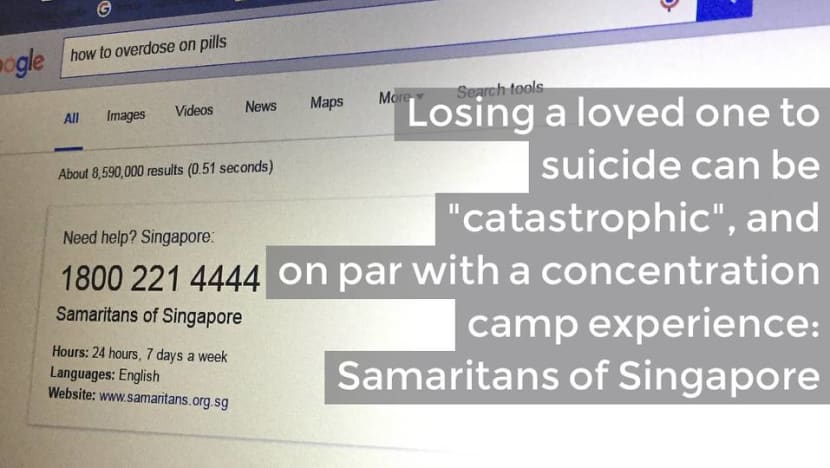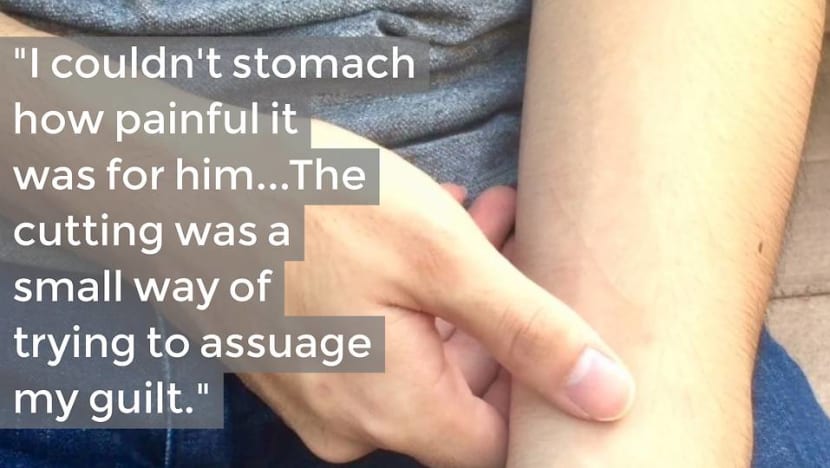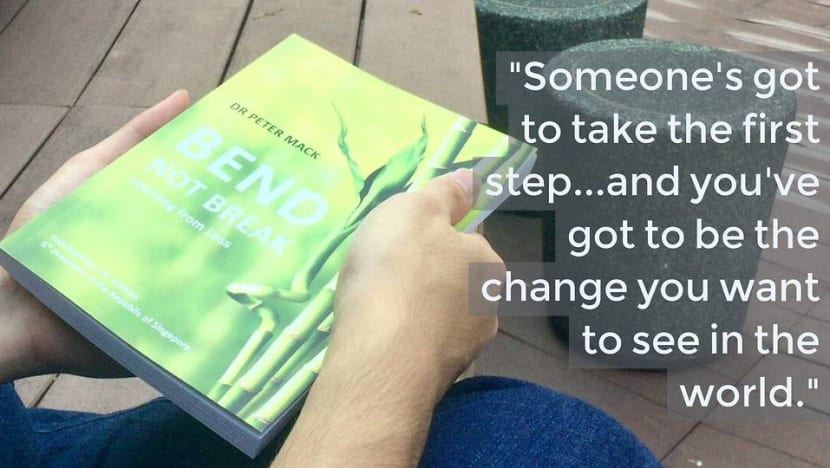Picking up the pieces: Losing a loved one to suicide
According to international research, an average of at least six people are affected by the suicide of a loved one. More of them are now coming forward to tell their stories.

Suicide survivor Ryan Lim (Photo: Lianne Chia)
SINGAPORE: Undergraduate Ryan Lim used to spend a lot of time at the home of one of his closest friends, Jay*.
“One day, he decided he wanted to cook for us because we didn’t want to order in,” recalled the 21-year-old. “It was some rice, carrots and a sausage, and we just ate this sad excuse of a meal and went back to playing video games.
“It seems like a pretty average memory, but it’s one of my fonder ones of him and it’s something I really do cherish.”
Ryan values his memories of Jay because there is no way to create new ones. Three years ago, Jay took his own life, and the then-teenage Ryan was caught off-guard.
“My first reaction was just denial. I just kept telling the person who told me about Jay’s death to have faith in the doctors, and that Jay would pull through,” he said. “But she told me that no, he’d already passed away that afternoon, and there was no chance of him coming back.”
LIKE A ‘CONCENTRATION CAMP EXPERIENCE’
Ryan is part of a group known as suicide survivors – or those who have lost a loved or close one to suicide. International research estimates that an average of at least six suicide survivors are affected by the suicide of a loved one, according to the Samaritans of Singapore (SOS), citing facts from the American Association of Suicidology.

From 2013 to 2015, SOS saw an increasing number of clients who come in for suicide grief counselling, said its executive director Christine Wong. She added that more than half of them have suicidal thoughts themselves due to their loss.
“Bereavement following suicide is usually different from bereavement following death by natural causes, both in kind and intensity, and there is much greater trauma,” she explained. “The American Psychiatric Association ranks the trauma of losing a loved one to suicide as catastrophic, and on par with that of a concentration camp experience.”
According to experts Channel NewsAsia spoke to, some of the more common issues faced by suicide survivors include guilt and a lack of closure.
“They need closure because they don’t know why the person died, and whether they are responsible for it,” said Dr Peter Mack, a senior surgeon at the Singapore General Hospital and certified regression therapist. “They are usually in turmoil and they’ll be blaming themselves most of the time.”
“When you lose a loved one through natural causes, you can always go back and look at the old photos and think of fond memories,” he added. “But not in cases like this, because when you look at the photographs, you’ll probably be thinking if the person was really happy at this point in time, and if you missed something.”
“One of the most important questions I ask when I see patients is if there has been a recent suicide in the family,” said Dr Goh Kah Hong, a consultant at Khoo Teck Puat Hospital’s Department of Psychological Medicine. “It tells me that the person is going through a lot of stress, and there may also be some predisposition to psychiatric conditions.”
“When people come in and tell me about a recent loss through suicide, they are often in shock, and there are a lot of questions,” Dr Goh added. “Some of them will lapse into depression, and others may present with anxiety and post-traumatic stress syndrome.”
For Ryan, his grief in the immediate aftermath of Jay’s suicide was compounded by the fact that they had not been on the best of terms preceding his death. “I was in a lot of pain upon realising that my friend was gone, and I couldn’t reconcile the fact that he’d died and that I wasn’t there for him before he died,” he said.
“I felt intense guilt and regret, and I wanted to stop feeling that. I just didn’t want to feel anymore.”

In a bid to deal with the pain, he also started cutting himself.
“I couldn’t stomach how painful it was for him to have died that way,” he said, gesturing to a scar on his wrist. “The cutting was a small way of trying to assuage my guilt”.
PILLARS OF SUPPORT
The turning point for Ryan came when one of his teachers noticed the scar and insisted on professional help. His mother was also brought into the picture.
“The therapist was very compassionate and understanding, which is something I probably needed at that point in time,” he said. “Having someone who was kind to me when I couldn’t be kind to myself was something that was really important to me.”
For those going through depression or anxiety, the first line of defence is often the family and friends, said Dr Goh. “While there are people who come in to see us of their own accord, they are in the minority. More often, they’re coming in because someone has noticed they have a problem.
“It could be their friends or family members, or even a doctor at a clinic.”
SOS runs the only local outreach programme and support group here providing information, emotional support and professional services to survivors, according to Ms Wong.
“The Healing Bridge suicide bereavement support group provides a safe place for suicide survivors to express their struggles and receive support from each other,” she said. The group sees about 25 to 30 participants a year.
SOS also runs a Local Outreach to Suicide Survivors programme that provides emotional support to suicide survivors through calls, emails, text messages and care cards. About 250 suicide survivors were attended to annually through the programme from 2013 to 2015.
The Khoo Teck Puat Hospital has also developed a website on mental health conditions in collaboration with the Agency for Integrated Care. The website, THRIVE, provides basic information about psychological issues and includes several self-help modules, meant for those who want to find out more about mental illnesses.
SPEAKING OUT
But for every survivor seeking help, there could be others suffering in silence.
One major reason for this, said Dr Goh, is that survivors are afraid to talk about it. “In our society, people are very conservative and suicide carries a big stigma, especially if it’s a loved one,” he said. “They may not want people to ask about it, and they are sick of talking about it.”
Singapore’s society may also be lacking in mental health awareness, he added. “People may not know that not sleeping for a prolonged period of time is not normal, and people don’t know that if you keep crying and have suicidal thoughts, this is something that can be helped.”
That is why raising awareness and public education is so important, he added.
SOS has published two books by suicide survivors, and Dr Mack has also written two books on the topic. The latest one, titled Bend Not Break – Learning From Loss, was launched last month, and it tells Jay’s story.
“I thought I could pen down people’s feelings, thoughts and emotions in a way and form that would help other people in the healing process, especially those who have come close to suicide themselves before,” said Dr Mack. “And at least, for people who haven’t had an encounter with suicide, at least they understand what the suicide experience is like.”
Ryan also contributed his perspective to the book. And while he admitted being hesitant initially about making it public, he chose to go forward with it in the end.

“When you hear about suicide, it’s usually from the newspaper, and is very detached from your own life, but this actually happens, and it’s a lot more common than you think,” he said.
“Someone’s got to take the first step in starting this conversation about mental health and suicide awareness. And you’ve got to be the change you want to see in the world.”
*Jay’s name has been changed for privacy reasons.














